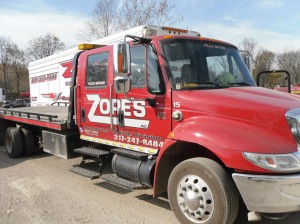
Indianapolis Towing Company 317-247-8484
needed for a safe and legal tow.
Towing Accessories
There are six chief trappings you will need for any tow. These parts include a trailer hitch receiver, safety chains, pin and clip, ball mount, trailer hitch ball, and wiring harness. Although many towing guidelines will not mention safety chains as a “necessary” component for towing, they are actually mandatory under law. Beneath their description below, you’ll see why.
Trailer Hitch Receiver
The trailer hitch receiver is the portion that connects to the frame of a vehicle on its underside. They are made to “receive” certain types of tow ball mounts. They are assigned a “class” rating that defines their weight capacity, or the amount of weight a trailer is intended to pull. There are five classes, from Class I to Class V. It is vital to use the proper class hitch receiver for the safest and most effective towing possible.
Trailer Hitch Ball
Also called a tow ball or trailer ball, trailer hitch balls come in three different sizes and must also be matched according to weight capacity. The trailer coupler mounts and locks on top of the ball hitch, creating the link between the vehicle and the trailer. Sizes are measured in diameter and include 1-7/8”, 2”, or 2-5/16 inches.
Ball Mount
The ball mount, or drawbar, is the component that fits into the trailer hitch opening and provides a platform to mount the hitch ball. These come in different shapes, sizes, and styles depending on the type of tow you need.
Pin and Clip
The pin and clip is a device that holds the ball mount within the trailer hitch receiver. You can also purchase hitch locks for additional security. It helps to prevent theft of your towing accessories.
Wiring Harness
A wiring harness is used for connecting power to the lights for the trailer. This includes turn signals, flashers, brake lights, and parking lights. Not only are these mandatory under law, they are extremely important for road safety. These should be checked every single time a vehicle and trailer are driven, even multiple times per day.
Safety Chains
Although a trailer can be towed without using safety chains, it is like driving a car without wearing your seatbelt. Safety chains ensure that, in the case of an emergency, the trailer and hitch do not become completely separated from each other while on the road. They cross underneath the towing vehicle and trailer, securing the trailer load to the trailer hitch. Without them, a trailer could entirely detach from a vehicle and go awry on the road.

